
Review: Three is better than Two - for AMD
At CeBIT 2008 we had a chance to play a bit with the first Tri-Cores from AMD. While all the B2 steppings went to the biggest OEMs such as Acer, Dell and HP - today the "real" ones hit the streets.
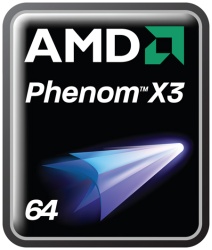
The new tri-cores are exactly the same as any AMD quad, the B3 stepping removing a seven-year-old TLB bug known since K6-III, only one of the four cores is deactivated. While you might guess AMD could have deactivated a portion of the L3 cache, they did not - you get the full 2MB known from the quads.
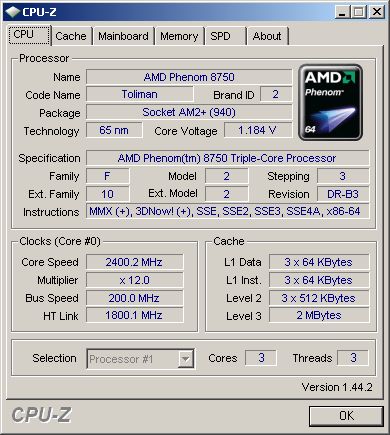
The tri-cores will not come as "Black Edition," so the only option to overclock is to raise the "virtual FSB." Since Athlon 64 days, AMD does not use an FSB anymore. This virtual FSB is only a reference clock from which any frequencies will calculated. Setting this to 240MHz it raises the CPU-clock to 2.88GHz, we tried more, but the board did not like it.
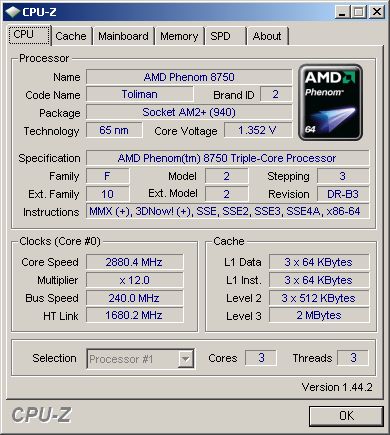
To compare to a quad-core properly we used our Phenom X4 9850 Black Edition and reduced the multiplier to 12, to match with the X3 8750.
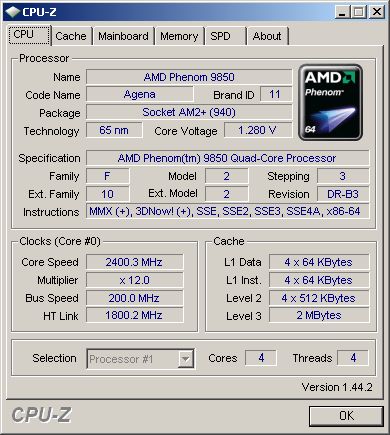
Testbed:
Motherboard:
MSI K9A2 Platinum (provided by MSI)
AMD 790FX/SB600
CPU:
Intel Core-2 Duo E8400
CPU-Cooler:
Scythe Andy Samurai Master (provided by Scythe-Europe)
Memory:
Kingston 2GB Kit PC2-9600U KHX1200D2K2/2G (provided by Kingston)
CL5-5-5-15 CR2T at 1.80V
Graphics Card:
Jetway Radeon HD3870 (provided by mec-electronics)
Power supply:
Silverstone Element SF50EF-Plus (provided by Silverstone)
Hard disk:
Samsung SP1614C
Case fans:
SilenX iXtrema Pro 14dB(A) (provided by PC-Cooling.at)
Scythe DFS122512LS
Case:
Cooler Master Stacker 831 Lite (provided by Cooler Master)
AMD is still not a champ in the multi-media department. Intel decided to boost their SSE unit by doubling the frequency - which they did back with Pentium 4. AMD decided to use two separated units per core. The only problem is, there is little software supporting AMD's architecture, so most of the time the second SSE unit is idling which gives AMD quite bad scores. We would have liked to compare to an overclocked Phenom X4 9850, but while testing the VRM failed. At least three cores can overtake Intel with two cores:
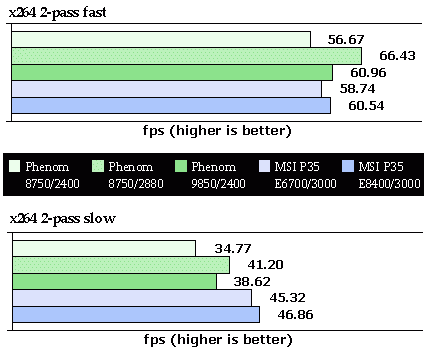
The more important question is, can three cores help in games? Of course, that depends on the game, but like Crysis more and more games are using three or four threads simultaneously.
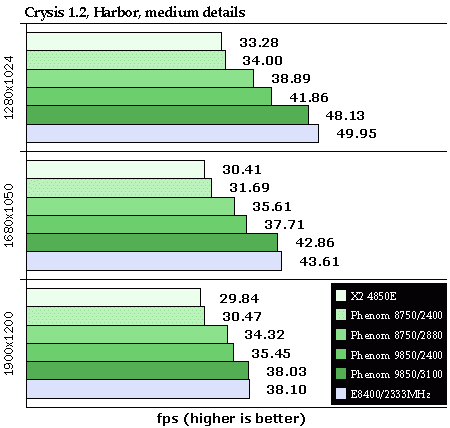
Conclusion:
AMD is doing better nowadays, products announced do really appear. At press time, the prices for a Phenom X3 8750 and Phenom X4 9750 are exactly the same, which is ridiculous. To be on the safe side, we advise you not to use a Phenom X4 9850 ,which is only €20,- more expensive but when overclocked it may fail your VRM, except if your board is using a five or six-phase VRM design.
We see a third core does help AMD to come closer to Intel - dual cores - and even to overtake them, but due the non-existing support for two SSE units AMD still struggles. The new 45nm cores are coming in autumn, and our hope is AMD changed its mind and uses the same approach as Intel does, with only one SSE unit per core but with double the clock, otherwise AMD will end up behind again.
Wait for the next price cuts for AMD, a tri-core should not cost more than €120,- and you can grab one without hesitation. At least that will put AMD in front of the core per price ratio.
